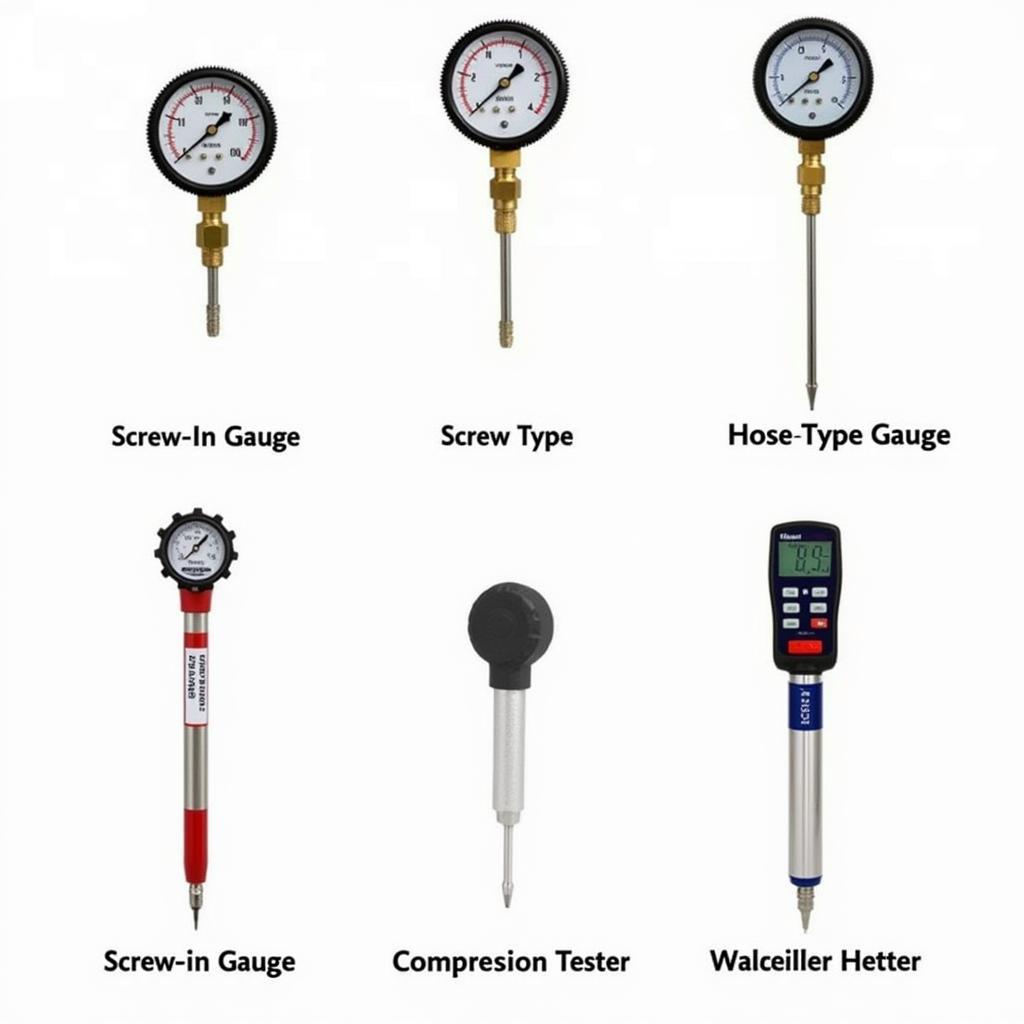A Car Compression Test Tool is an essential piece of equipment for any mechanic. It allows you to quickly and easily diagnose engine problems, saving you time and money. This guide will cover everything you need to know about car compression test tools, from how they work to how to choose the right one for your needs.
Understanding the Importance of a Car Compression Test
A compression test measures the pressure inside each cylinder of your engine. This pressure is created by the upward stroke of the piston, compressing the air-fuel mixture. If the pressure is low in one or more cylinders, it indicates a problem that needs to be addressed. Low compression can be caused by worn piston rings, damaged valves, or a blown head gasket.
Why You Should Use a Compression Test Tool
Using a tool for compression test car can help you identify the root cause of engine problems such as:
- Loss of power
- Poor fuel economy
- Rough idling
- Difficulty starting
Early diagnosis with a compression test can prevent further engine damage and save you costly repairs down the line.
Types of Car Compression Test Tools
Several types of car compression test tools are available, each with its own pros and cons. The most common types include:
- Screw-in Gauge: This type screws into the spark plug hole and provides a direct reading of the cylinder pressure.
- Hose-type Gauge: This type connects to the spark plug hole via a hose and is generally more versatile than a screw-in gauge.
- Digital Compression Tester: These offer more precise readings and often include additional features such as data logging.
Choosing the right type depends on your specific needs and budget.  Various Car Compression Test Tools Displayed
Various Car Compression Test Tools Displayed
How to Perform a Car Compression Test
Performing a car compression test is relatively straightforward, but it’s important to follow the correct procedure to ensure accurate results. Here’s a step-by-step guide:
- Prepare the engine: Warm up the engine to operating temperature.
- Disable the ignition system: Disconnect the ignition coil wire or remove the fuel pump fuse.
- Remove all spark plugs: This allows each cylinder to be tested individually.
- Install the compression tester: Screw in the tester or connect the hose to the spark plug hole.
- Crank the engine: Crank the engine for several revolutions until the pressure reading stabilizes.
- Record the reading: Note the pressure reading for each cylinder.
- Compare the readings: Compare the readings across all cylinders. Significant variations between cylinders indicate a problem.
“Accurate diagnosis is key to efficient repairs,” says John Miller, a seasoned automotive engineer. “A car compression test tool provides the vital data needed to pinpoint the source of engine issues.”
Choosing the Right Car Compression Test Tool
When choosing a car compression test tool, consider the following factors:
- Accuracy: Look for a tool that provides accurate and consistent readings.
- Durability: Choose a tool that is built to last and can withstand regular use.
- Ease of Use: Opt for a tool that is easy to use and understand, even for beginners.
- Features: Consider features such as data logging, automatic shut-off, and various adapter sizes.
- Price: Find a tool that fits your budget while still meeting your quality requirements.
“Investing in a quality car technician tools is essential for any serious mechanic,” adds Sarah Chen, an experienced automotive technician. “A reliable compression tester can significantly improve diagnostic accuracy and save you valuable time in the long run.”
Conclusion
A car compression test tool is an invaluable tool for any mechanic or car enthusiast. By understanding how to use it effectively and choosing the right one for your needs, you can quickly diagnose engine problems, saving you both time and money. Investing in a high-quality car compression test tool is an investment in the health and longevity of your engine.
FAQ
-
What is a normal compression reading? A normal reading typically falls between 120-150 psi, but this can vary depending on the engine.
-
Can I perform a compression test myself? Yes, with the right tools and knowledge, a compression test can be performed DIY.
-
What if my compression readings are low? Low readings indicate a problem such as worn piston rings, damaged valves, or a blown head gasket. Further diagnosis is required.
-
How often should I perform a compression test? A compression test is typically performed when there are signs of engine trouble or as part of a preventative maintenance schedule.
-
What other tools do I need for a compression test? You’ll need basic hand tools to remove spark plugs and possibly adapters for the compression tester.
-
Where can I purchase a car compression test tool? Automotive parts stores, online retailers, and specialty tool suppliers.
-
Is a digital compression tester worth the extra cost? Digital testers offer greater precision and often include additional features, which can be beneficial for professionals.
Need help with your car diagnostics? Contact us via WhatsApp: +1(641)206-8880, Email: [email protected] or visit us at 910 Cedar Lane, Chicago, IL 60605, USA. Our 24/7 customer support team is ready to assist you.

Leave a Reply